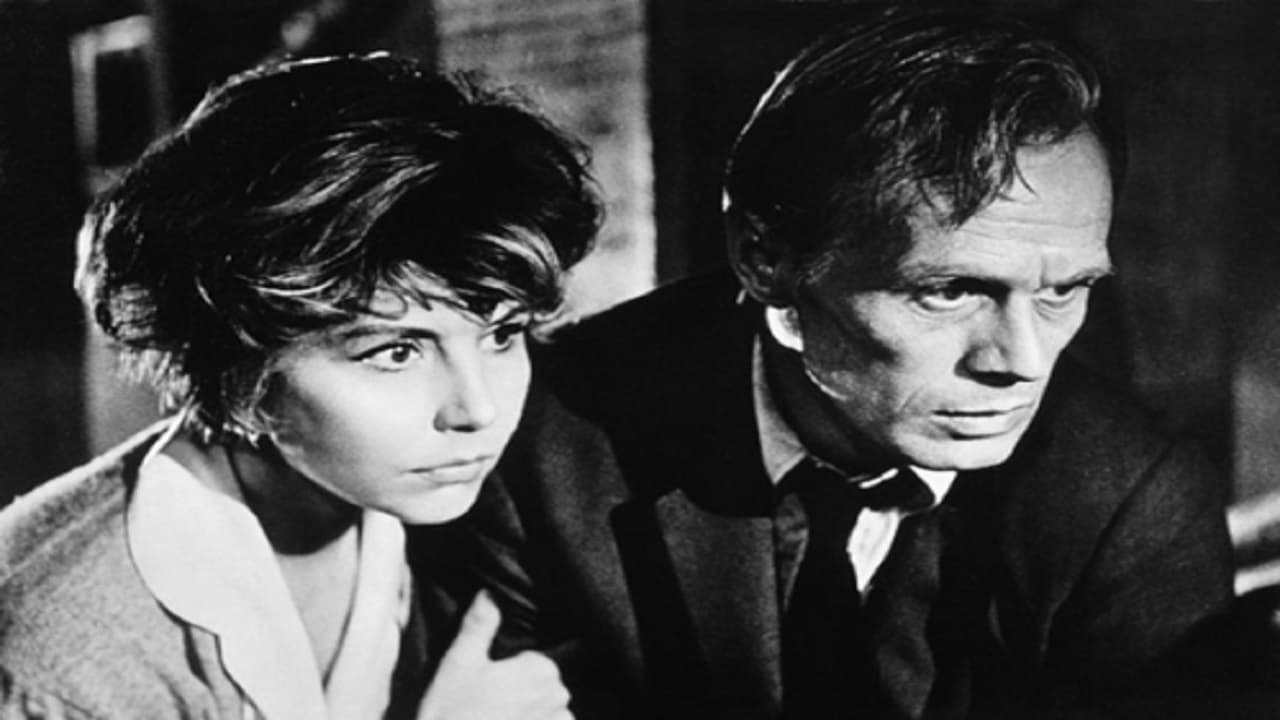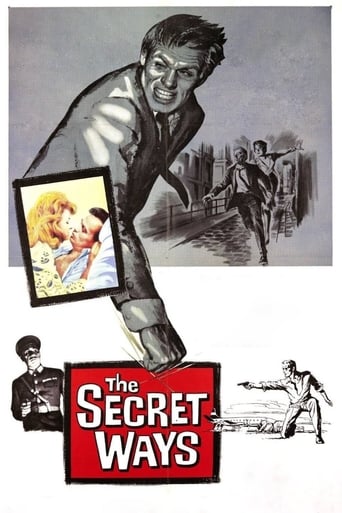

Here is a film with several overlooked firsts. 1. First major film score for John Williams --at the time of writing, not even IMDb have this work on their listing of his filmography!-- yet it remains one of his strongest, most flavorful early scores. Whoever arranged and orchestrated this work with its grinding bass cello riffs and stabbing violins, they've managed to infuse an air of dark intrigue. This is then complemented with a broad melodic french horn main theme that begins immediately under the Universal International Trade Mark, sweeping you into the darkly beguiling situations that follow. If not arranged by Williams, then this could have been in the hands of Joseph Gershenson, whose name was featured as music supervisor on almost all American U.I. films during the 50-60s. Williams' composer credit is under his early calling of 'Johnny' Williams.2. First film Produced and part directed (uncredited) by Richard Widmark 3. First film with a screenplay by Widmark's wife Jean Hazlewood. 4. First appearances in an American film for stunningly beautiful Viennese born Senta Berger, and Sonja Zieman.5. Appears to be the first film adapted from an Alistair MacLean novel.This film has been unfairly passed over, it was strikingly photographed on location in marvelous B/W by veteran Cinematographer Max Green...who also created the moody look to classics like; "Hatters Castle" in '42 and "Thunder Rock" also '42. Green also shot the first great noir film made by American director Jules Dasin (following Dasin's black listing in the late 40s by the House of Un-American Activities) it was the hugely atmospheric: "Night and the City" that was produced in Britain in 1950.Award winning German actress Sonja Zieman gives a forceful performance as Julia, daughter of the professor seeking to defect to the west. The supporting cast are all first rate. While from a story by Alistair MacLean it's not just given a simple action treatment, so this may account for other comments made by those looking for action thrills. While it does offer a couple of fanciful escape scenarios it's generally a deliberately paced, complex story involving the planned defection of pro-west refugees from Communist Hungary. As with many 60s espionage movies you may have to work hard to figure who's who and what motivates them to act in certain ways! Some of this confusion possibly came from Widmark sacking director Karlson in the last weeks of production. Perhaps this is best viewed by serious followers of the on-going after effects of WW11. Those who enjoyed the similar 'Quiller Memorandum'('66) should also be entertained by this one. Rarely screened, and it seems quality DVDs may be difficult to find. 'The Secret Ways' remains an interesting drama for those who enjoy well made, off- beat espionage movies from the 60s. KenR.Note: Up-Dated information: I have just purchased a DVD of this movie from Germany. It has the Universal 'studio' seal on the cover and on the disc itself. While the transfer image is quite clean it remains a little on the dark side suggesting it may have been taken from a good 35mm Composite print rather than a negative. This is better than some I've seen. It was under Cinema Classics so look for it, I ordered on-line from: DITH shop Germany.
... View MoreThe Secret Ways is one of the more obscure Richard Widmark films ever done. Oddly enough it was a family project with him producing it and his wife Jean Hazlewood writing the screenplay. It's easy to base a film on an Alastair MacLean novel, but hard for director Phil Karlson to make a boring film, but that's what Widmark and Karlson succeeded in doing. The cinematography was so drab in Vienna and in Zurich Switzerland standing in for Budapest that I fell asleep. Color might have helped, but one of the best espionage stories ever done was also filmed in black and white in Vienna, that being The Third Man. That is certainly not boring.Richard Widmark plays an American agent who is asked to do a job and get a Hungarian resistance leader in Walter Rilla out from behind the iron curtain. Rilla is reluctant to go and at first his daughter Sonia Ziemann is reluctant to cooperate.For a MacLean novel it has a lot less plot twists than normal. You want to see MacLean done right for the big screen checkout Where Eagles Dare.Dick Widmark never produced another film again, wonder why.
... View MoreI don't think that anything was actually shot in Budapest. I recognized a lot of Viennese places (Apollo cinema, Vienna University, and others), but nothing from Budapest really. I suppose it was out of the question to get a permission to shoot that kind of movie in Hungary. The communist regime is not portrayed in a friendly manner at all. :-)But the wrong scenery is not a negative, Vienna is beautiful and many old houses have similar styles than many old houses in Budapest. Even today, more so in 1960.Besides the historic scenery, it's a rather usual good vs evil plot. Not very exciting.
... View MorePlease note: there are some scene 'spoilers' contained within. This movie was filmed in 1961 and is set in 1960 Vienna and Hungary during the Cold War. Richard Widmark turns in an excellent performance as the cool & cocky American mercenary 'Michael Reynolds' who has been offered a job by his old acquaintance Hermann Sheffler, of Swiss Bank. The job? To go behind the Iron Curtain into Hungary and locate 'Jansci' (played by Walter Rilla), who is one of the resistance leaders. But the catch is that once he arrives in Budapest, Reynolds has only 48 hours to find Jansci and get him out. To aid him in finding Jansci, he locates Jansci's daughter, Julia (played by Sonja Ziemann). They cross the border into Hungary, with Reynolds posing as an American newspaper reporter. They are welcomed by the local Communist party officials and kept under constant surveillance. But Reynolds & Julia manage to ditch the security police tailing them and make their way to Jansci. They eventually plan Jansci's escape but are captured in the process and wind up in prison. Fortunately, one of Jansci's men ('The Count', played by Charles Regnier), impersonates a military official and attempts to break them out of prison. The final moments of the film show them trying to make a dash for freedom to the airport. Filmed on location in Switzerland and Vienna in black & white, there's definitely a film noir effect created here which makes this cold-war adventure more believable as a serious drama rather than if it were filmed in color. Also lending to the accuracy of the film are the numerous portraits in the background of Janos Kadar, the leader of Hungary at the time. The music, by Johnny Williams, also contributes significantly to the overall drama. Based on the novel by Alistair MacLean, "The Secret Ways" has plenty of action along with witty dialogue.Other fine performances are given by Stefan Schnabel as the border official (many may recall him as the General Secretary in the 1982 Clint Eastwood movie, "Firefox"). All in all, an enjoyable cold-war spy thriller. -GH
... View More